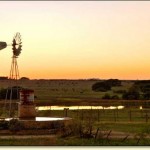“There is a tide in the affairs of men which when taken at the flood leads on to fortune.”
William Shakespeare
Shakespeare understood the importance of timing to success. Apparently, the Tax Court holds a similar view when it comes to charitable donations of conservation easements.
 This is our third post on the Tax Court’s opinion in Bosque Canyon Ranch. The memorandum decision isn’t necessarily an important case; it didn’t establish any new precedents for the Court. However, there is quite a bit about modern conservation easements packed into a fairly short opinion, which gives us an opportunity to unpack some of what is there.
This is our third post on the Tax Court’s opinion in Bosque Canyon Ranch. The memorandum decision isn’t necessarily an important case; it didn’t establish any new precedents for the Court. However, there is quite a bit about modern conservation easements packed into a fairly short opinion, which gives us an opportunity to unpack some of what is there.
Today, we look at the Court’s conclusion that the property transfers between the two Bosque Canyon limited partnerships and their partners were disguised sales. (Click here for a more detailed case summary.)
A transfer of partnership property to a partner within two years of a cash (or other) contribution by that partner is presumed to be a disguised sale under IRC §707. The Bosque Canyon partnerships received cash and transferred property to partners within a two year window. That timing is not in question.
The presumption in IRC §707 may be refuted by facts and circumstances showing that the transfer did not constitute a sale. Treas. Reg. §1.707-3(b)(2) suggests 10 circumstances when a sale might be present. The Court identified five of those factors in its opinion.
- the timing and amount of the distributions to the limited partners were determinable with reasonable certainty at the time the partnerships accepted the limited partners’ payments;
- the limited partners had legally enforceable rights, pursuant to the LP agreements, to receive their Homesite parcels and the appurtenant rights;
- the transactions effectuated exchanges of the benefits and burdens of ownership relating to the Homesite parcels;
- the distributions to the partners were disproportionately large in relation to the limited partners’ interests in partnership profits; and
- the limited partners received their Homesite parcels in fee simple without an obligation to return them to the partnerships.
When the transfers between the partnership and partners are not simultaneous, an additional rule provides that a disguised sale occurs only if “the subsequent transfer is not dependent on the entrepreneurial risks of partnership operations.” Treas. Reg. §1.707-3(b)(1)(ii). The timing of the transfers was not in dispute either. They were not simultaneous.
The timing issue, however, came in the context of entrepreneurial risk. The taxpayers argued that the limited partners’ contributions would be at risk if the anticipated conservation easements were not granted. The Court rejected this argument based on the timing of the easement grants. Unfortunately, the conservation easements for both partnerships were granted before the limited partnership agreements were executed. The Court found that the payments were not subject to the entrepreneurial risks of the partnership because the easements were secured before the partnerships were formed. In the case of Bosque Canyon Ranch I, the easement was granted just two days before the agreement execution, prompting us to recall Maxwell Smart’s famous line.
Given the Court’s determination on entrepreneurial risk, there was no need to parse the specific facts and circumstances of these transfers, or whether the five factors identified by the court were enough to warrant disguised sale treatment. It leaves open the question whether similar, or even slightly different, facts and circumstances would be sufficient to find a disguised sale. We don’t know. But with time, and another case, there’s a fair chance we will.


